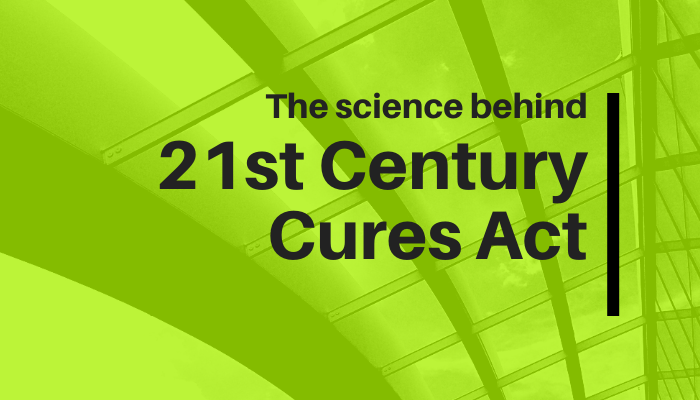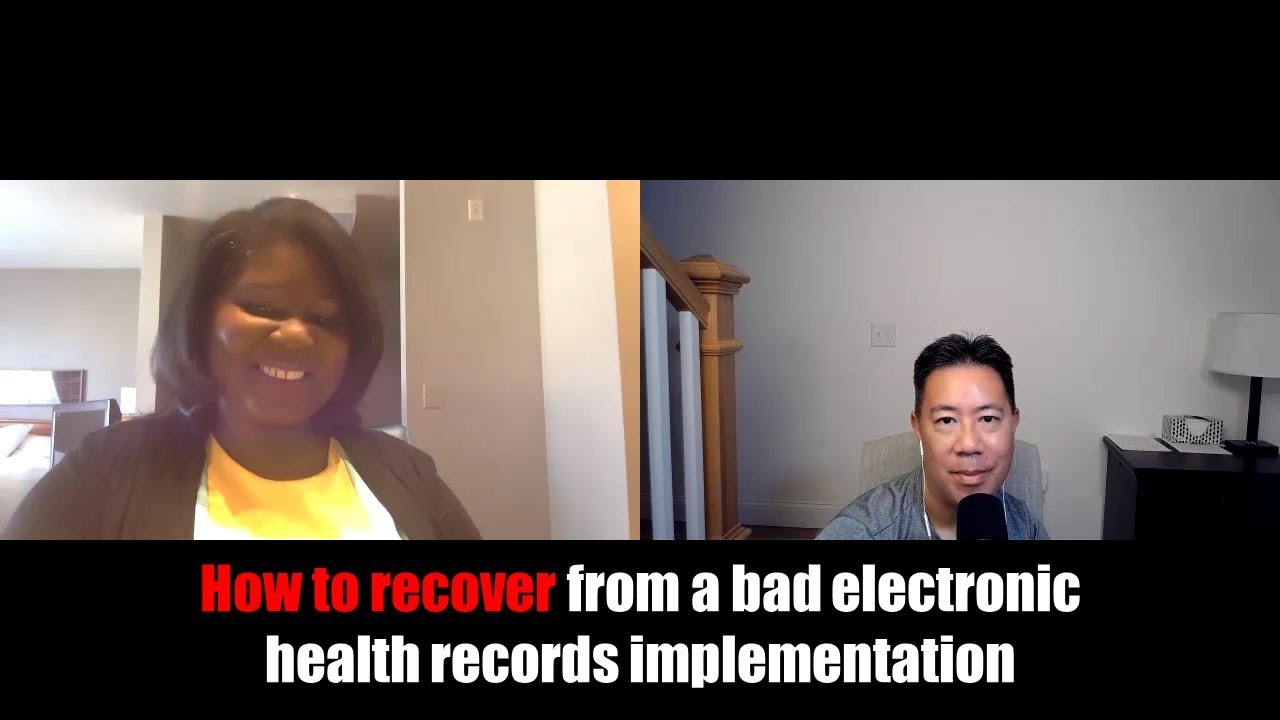
Illinois APEX Accelerator September 2024 Newsletter
Afua Aning, Owner
My Just Checking In, LLC
My Just Checking In is a physician-operated IT consulting firm with in-depth knowledge and expertise in Epic, Cerner, Meditech, and other electronic health record (EHR) systems.
Certified: SBA WOSB; Federal SDB; State of IL WBE;
STORY TITLE:
"Innovating Healthcare IT: The Visionary Approach of My Just Checking In"
Company Overview: Launched in 2018, My Just Checking In is a physician-operated IT consulting firm specializing in healthcare information technology. Their team of subject matter experts brings over 20 years of hands-on experience in healthcare IT, making them a trusted partner for both federal and private sector clients. MJCI expertise covers the full spectrum of electronic health record (EHR) systems, including Epic, Cerner, Meditech, and other leading platforms. They have spearheaded successful EHR implementations and consulting engagements at some of the most prestigious medical facilities in the United States, including Emory Healthcare, Tufts Medical Center, Yale University Medical Center, and Madigan Army Medical Center.
What Sets Them Apart:
- Industry-Leading Consultants:
Their team is comprised of the most talented and experienced consultants in the healthcare IT industry. They take pride in delivering exceptional results with a lean approach—requiring fewer personnel on-site, which translates to significant cost savings for our clients. This efficiency also enhances continuity and ensures that our projects consistently exceed expectations.
- Proven Experience:
With decades of experience, the consultants have developed a deep understanding of the healthcare ecosystem. They excel at working collaboratively across complex organizations, ensuring seamless integration and execution of IT projects. Their expertise enables them to navigate the unique challenges of both large-scale federal projects and intricate private-sector initiatives.
- Tailored Solutions:
MJCI recognize that every healthcare organization is unique, with its own set of challenges and objectives. Their approach is highly flexible, allowing them to customize their solutions to meet the specific needs of each client. Whether it’s optimizing existing systems or implementing new technologies, they deliver solutions that are aligned with the clients' goals.
- Performance-Driven Results:
Success is measured by the success of the clients. MJCI is committed to delivering performance-driven results that not only meet but surpass clients' goals. This is achieved through meticulous scoping, strategic planning, and a strong governance model that ensures projects are delivered on time, within budget, and with the highest quality.
- Peer-to-Peer Training:
MJCI offers unique peer-to-peer training programs led by clinicians who have advanced IT experience. This ensures that your staff receives training that is both relevant and practical, enhancing their ability to effectively use EHR systems and other healthcare technologies.
- Customer Service Excellence:
At My Just Checking In, customer service is not just a department—it’s a cornerstone of their business dedicated to providing a service-oriented experience that ensures their clients feel supported and valued at every stage of the project. Commitment to excellent customer service fosters long-term partnerships and sustained client satisfaction.
- Best Practices for Revenue Cycle Improvement:
My Just Checking In, employs industry best practices to help healthcare organizations improve their revenue cycle, increase cash flow, reduce operational costs, and resolve common challenges. This holistic approach ensures that financial performance is optimized without compromising patient care.
- Value-Driven Offerings:
We believe that high-quality services should be accessible to organizations of all sizes. Our value-driven offerings are designed to accommodate a range of budgets, ensuring that even smaller healthcare providers can benefit from our expertise without compromising on quality.
- Innovative Solutions for Healthcare Organizations:
Innovation is at the heart of what they do. They develop and implement cutting-edge solutions that drive efficiency and enhance patient care. Focus on innovation ensures that clients are always at the forefront of healthcare technology, with solutions that are both scalable and adaptable.
- EHR Optimization:
Our seasoned staff’s deep clinical knowledge enables us to optimize EHR systems holistically. They conduct thorough assessments to identify areas within your EHR that may not be performing optimally and provide actionable recommendations to enhance functionality, streamline workflows, and improve patient outcomes.
In 2019, the newly formed Healthcare IT group reached out to the Business Development Team – College of DuPage and was able to take advantage of the services provided by both the APEX Accelerator (PTAC) and the SBDC team. We helped them take a strategic and collaborative approach to establish and grow its business, with a clear focus on securing contracts with veteran hospitals as a long-term goal. Here's how they went about it:
1. Reaching Out to the SBDC and APEX Accelerator
- Small Business Development Center (SBDC): The Healthcare IT group first connected with their local SBDC to receive guidance on forming the business. The SBDC provided essential resources, including business registration assistance, market research, and initial business planning.
- APEX Accelerator: Recognizing the importance of government contracting, the group also reached out to an APEX Accelerator. The Accelerator assisted with the certification process and assisted in navigating the complex world of government procurement, offering valuable insights on how to position themselves for success in this highly competitive market.
2. Creating a Strategic Plan
- With the guidance of both the SBDC and APEX Accelerator, the Healthcare IT group developed a comprehensive strategic plan. This plan outlined their mission, vision, and business goals, with a specific focus on the healthcare sector.
- The plan included market analysis, competitive positioning, and a roadmap for growth. Key components were:
- Target Market Identification: Identifying clinics, hospitals, and teaching universities as initial target clients.
- Service Offerings: Focusing on teaching these healthcare institutions how to maximize the use of Electronic Health Record (EHR) systems, particularly EPIC, a leading EHR platform.
3. Securing WOSB Certifications
To enhance their credibility and access to government contracts, the group pursued and secured Women-Owned Small Business (WOSB) certifications. This certification provided them with a competitive edge in the federal contracting arena, making them eligible for set-aside contracts specifically reserved for WOSBs.
4. Reaching Out to Clinics, Hospitals, and Teaching Universities
- Armed with their strategic plan and WOSB certifications, the Healthcare IT group began outreach to their target market:
- Educational Workshops and Seminars: They offered educational workshops and seminars to clinics, hospitals, and teaching universities, focusing on the optimization of EHR systems like EPIC.
- Tailored Solutions: The group developed tailored solutions for these institutions, helping them streamline operations, improve patient care, and enhance data management through effective use of EHR technology.
5. Ultimate Goal: Contracting with Veterans Hospitals
- The group's long-term objective was to secure contracts with veterans hospitals. Their strategic plan included steps to build relationships with these institutions, demonstrate their expertise, and position themselves as a preferred vendor.
- Targeted Outreach: They planned targeted outreach campaigns, leveraging their WOSB status and proven track record with other healthcare institutions to make inroads with veterans hospitals.
- Continuous Improvement: The group committed to continuous improvement and innovation in their offerings, ensuring they stayed at the forefront of EHR technology and could meet the evolving needs of veterans hospitals.
By strategically engaging with both the SBDC and APEX Accelerator, securing WOSB certifications, and developing a well-thought-out plan to reach their target market, the My Just Checking In Healthcare IT group set themselves on a path toward achieving their ultimate goal of contracting with medical facilities and has recently subcontracted with a Veteran Owned IT company currently pursuing contracts with the Veterans hospitals.
Conclusion: My Just Checking In is more than just an IT consulting firm—They are a trusted partner committed to the success of healthcare organizations. The physician-led team combines clinical expertise with technical prowess, delivering tailored, innovative, and high-impact solutions that drive results. Whether you're a small clinic or a large healthcare system, they have the experience, knowledge, and dedication to help you achieve your IT goals and improve patient care.
CLIENT QUOTE: "Working with Ileen Kelly from the College of DuPage APEX Accelerators Team was instrumental for me. Her guidance and support provided me with the confidence I needed to navigate the unfamiliar terrain of DBE certification. Initially, the sheer volume of paperwork for certification was overwhelming, but Ms. Kelly patiently walked me through each requirement, clarifying the necessary steps and assuring me that success was within reach. Her coaching not only facilitated my certification but also empowered me to confidently pursue additional certifications. I am truly grateful for Ms. Kelly's expertise and ongoing support as I continue to expand and develop my small business."

The artistic side of a broken pot: a story about Oracle and Cerner
I recently had an opportunity to assist a hospital organization with its electronic health records implementation in Las Vegas. I’m usually working non-stop during implementations, but I was ecstatic when I could get a break from work to sightseeing. I arranged with a tour bus to explore the Grand Canyon (I’m not much into gambling).
I reported to the tour bus at 6 a.m. and was ushered inside the remarkably comfortable bus with my fellow travelers. I sat across from a young Japanese man named Ginjz. We proceeded to engage in small talk. The topic eventually came to Kintsugi, the Japanese art of repairing broken pottery by mending the areas of breakage with mixed gold, silver, or platinum. In Japanese culture, when valuable pottery breaks, there is a process where the breaks are highlighted with metal ornamentation to emphasize the imperfection, not hide it. The broken crockery that is rebuilt becomes more valuable than the previous form.
I couldn’t help but relate this story to the acquisition of Cerner by Oracle last year for just over $28 billion. It remains to be seen how Oracle will incorporate Cerner into its larger business. It’s also a mystery how Oracle will change Cerner as the company moves into the future. As John Moore, author of the article, “The Repercussions of Oracle’s Acquisition of Cerner,” explains, “Oracle has set up Cerner as a stand-alone division within Oracle that may provide some autonomy and unlike previous Oracle acquisition(s) where the company had some domain expertise.” It’s uncharted territory for both entities.
Oracle has been an exceedingly small player in the electronic health records (EHR) provider market and is heavily dependent on Cerner to make this acquisition work. However, Oracle’s expertise in cloud-based technology could be a game-changer for the health care IT world.
Cerner is coming off a challenging year. In addition to being acquired by Oracle, the company’s other big headline in 2021 was the failed rollout as the replacement EHR at Veterans Administration hospitals. A successful integration by Oracle could provide the synergy the company needs. While Cerner is a significant player in EHR, Oracle dwarfs the company’s size with annual revenue of over $40 billion. That revenue could open up new opportunities for Cerner that didn’t exist before. Its prominent presence in tech-heavy locations such as Silicon Valley and headquarters in Austin, Texas, will help the company attract the talent it needs to grow.
Perhaps by being acquired by Oracle, Cerner has found the gold bond needed to “Kintsugi” the cracks created by the past. The strength of this acquisition would be an innovative force that makes the electronic health record giant more potent than before.

Do prescription drug monitoring programs hurt more than they help?
It was a warm summer in Maine but felt like a cold winter in the confines of the hospital building. I was seated next to a physician who was quietly working on a big screen monitor. It was a slow workday as I pondered tips and tricks to make the physician workflow efficient while training providers on implementing electronic health records. I stared at the computer screen and the physician was hard at work. She was ordering a controlled substance for a patient. She reviewed the prescription drug monitoring program database (PDMP) as required by law. The patient had high overdose risk scores.
We both paused. Was the patient drug shopping? The physician overrode the warning and prescribed the medication. She exclaimed, “These are false flags; the patient has a complex medical history and needs this medication.” That was a physician that thought outside algorithms, paid attention, and knew her patient. I started to feel discomfort with the processes for prescribing opiates.
Was the PDMP using a flawed algorithm in labeling patients?
My mind raced back to when I was under anesthesia for a tooth extraction. I had awakened unexpectedly in the middle of the procedure and, in my dreamlike state, needed to be restrained to undergo more sedation.
My wisdom teeth were out, and the team was ecstatic to find that there wasn’t any permanent nerve damage as it was a complicated extraction. I was given prescribed pain meds, but it wasn’t enough to manage my pain. My provider wrote me another script the following day. I went to the local drug store to fill the script, and after 20 minutes, the pharmacist approached me. He explained that he couldn’t fill the medication. I was bewildered, and he could see it in my eyes.
I didn’t sleep the night before because I was severely in pain; this medication would give me the relief that I desperately needed. I couldn’t grasp what was going on. I didn’t recall being prescribed opiates in the past. Was I labeled as a drug seeker? I shrugged off the thought and proceeded to explain to the pharmacist, who was standing at a distance but directly in front of me; my face was swollen, and I had gauze in my mouth, which was hard to communicate. Still, I managed to explain to him why I had been prescribed another medication to manage my pain. He wasn’t convinced and went back behind the counter. As I looked around, I could see shoppers staring at me. I urged the pharmacist to call the doctor’s office to confirm my story. After another 20 minutes, I received my script.
Was the pharmacist basing his analysis on a flawed algorithm?
The United States has an opioid prescribing algorithm statewide PDMP that gathers data on patterns on drug-seeking to reduce the opioid overdose crisis. In the Wired article “The Pain Was Unbearable. So Why Did Doctors Turn Her Away? “Author Maia Szalvitz explained, “There are state-level prescription drug databases – electronic registries that track scripts for certain controlled substances in real-time; it gives authorities a set of eyes onto the pharmaceutical market. The monitoring process follows the number of pharmacies a patient has visited, combinations of prescriptions received, and health care organizations visited.”
But the system overrides physician decisions and experience. It also creates a big brother system that is more akin to a scene from the book 1984 than what we have come to expect from interactions between ourselves and our medical providers. What generates a flag is unknown, and the results can create a confusing playing field for those in genuine need of medication. According to the article, “20% of patients that were flagged by the algorithm as drug seekers are cancer patients with complex medical treatment.”
Do we really need to put cancer patients on the same list as Walter White from Breaking Bad?
The future of medicine will be more and more reliant on artificial intelligence based on algorithms. The advancement of such technologies makes medicine more efficient but can also lead to false conclusions if doctors are too dependent upon technology. After all, even though it’s a computer algorithm, it was devised by a human. Like a social media platform, artificial intelligence using an extensive data system constantly grows and changes depending on the input. This means that physicians need to be aware, not rely solely on system conclusions and look for zebras.
Note: The anecdote in the first two paragraphs is a fictionalization of my real-world experiences. It’s not based on a specific case, and I am respectful of patients’ stories and HIPAA regulations. I have never worked or been to Maine, although it would be nice to visit.

Physician informatics demystified
Nurse: “I need help with the computer; patient transfer needs to be completed.”
Me: “Ma’am, the patient’s medications are on ‘MAR HOLD,’ which means Medication Administration Record Hold. Therefore, we cannot administer medication unless an attending physician releases this hold. Can we get the physician on the phone for him to reconcile the meds?”
Nurse: Reluctant to call the physician, insists on completing the transfer at the unit manager screen. Finally, she places a call to the surgeon and hands me the phone.
Me: “Dr. Smith, we are having issues with reconciling your medication request.”
Dr. Smith: In a voice of frustration, “I left the hospital. Can’t the nurse reconcile the medication? I know how to reconcile medication, but there seems to be something wrong with the system. Can you find someone else who can reconcile the medication?”
Nurse: Shoves another phone toward my face and exclaims, “It’s dietary.”
Dietary: “Please, educate the doctors to place diet orders in the system correctly! Patients are going hungry because they are doing it wrong.” Me: “Yes, I will do my best to teach them when I have the first opportunity.”
Dr. Anderson: Walks up to me and exclaims, “Can you help me order electrolytes? The pre-built order set is not set to our protocol.”
Dr. Robinson: “Why does the discharge prescription paper print at the location of the patient? What if someone takes hold of the script paper and forges my name? It should print at the location of the physician. You know what, I’ll just write the script paper.”
This is a typical day in the life of a physician informaticist when helping health care organizations implement new electronic health records (EHR). The process can be challenging, frustrating, and seemingly impossible to navigate. Often, the software needs to be fixed, and optimization of the software can seem painstakingly slow, which exacerbates the situation. However, a physician informaticist is the provider/end user’s advocate in the process. We continue to create ways to make the implementation process more effective and less stressful.
We want to improve physician satisfaction, and lessons learned to minimize burnout by being a bridge between the physician and the EHR during the implementation of the new system. We accomplish this by smoothing communication between clinical and operational staff. We have experience engaging with providers, allowing them to master the new electronic health records system.
In the scenario above with Dr. Smith, there was a glitch in the system, we placed a ticket for the issue with the technical team, and it was promptly resolved. I assisted Dr. Anderson in creating an order panel that reflected hospital protocol. After that was accomplished, I helped Dr. Robinson set up an e-prescription for controlled substances. Finally, I educated the providers on placing correct dietary orders as requested by dietary.

The Race to Find Uses for Big Data
Smartwatch wearers: Have you checked your smartwatch lately? Did it tell you how many steps you have or how fast your heart is beating? How accurate is the information? What does that number mean for your overall health, and where do all of those numbers go after they are reported back to your computer?
The healthcare industry is under constant pressure to securely store patient information and still have it readily available to staff and consumers. However, only 20% of the data is used; what happens to the other 80%? How are we utilizing it effectively? We have collected data about almost every aspect of our lives, yet we face a situation where we are flooded with an unmanageable flow of data. Can we make a profit from the data to justify the storage of this data? If so, what are the ethical considerations to make?
"Big Data'' is the term often used to describe the large volume of information that has been collected in our digitally connected lives. It includes things like our blood pressure and how often we are stopped at a red light. The data is quickly becoming unmanageable and possibly even useless considering our current technology and current uses. Big data has to prove itself economically worthwhile for the growing costs of storage.
Finding new ways to use data can justify the added expense of storage, improve medical outcomes, and discover previously unknown linkages between a variety of variables.
From an innovation standpoint, companies like IBM, GE, and Amazon are in a race to build a system that will put this wealth of knowledge to good use. Traditional technologies like electronic health records (EHR) systems have been developed partly to make it easy to store data and create queries to pull information. These systems allow for easy access to pertinent patient information, reduce medical redundancy, and lower costs. EHR can also be used with artificial intelligence to find new information and make new conclusions about medical care for medical staff and information specialists.
However, the drive to monetize patient data must be done cautiously and with a keen eye on accuracy and quality. A survey by Deloitte found that "More than two-thirds of survey respondents stated that the third-party data about them was only 0 to 50 percent correct. One-third of respondents perceived the information to be 0 to 25 percent correct."
The accuracy of data in the measurements entered, and the quality of correlations found must be considered. In response to the inaccuracy of third-party Big Data, Deloitte recommends to their clients that firms be more prudent in purchasing and collecting information. This more skeptical view of data should apply adequate pressure for data collection bodies to go beyond the numbers to create actual value. The worth of the data is not just the digits; it is also how the information can be used to improve decisions in the C-Suite.
The opportunities provided by Big Data are expansive and potentially life changing. However, these opportunities must be evaluated holistically and not simply through a cost/benefit analysis. Data accuracy and data quality will be critical to creating better (and lower cost) patient outcomes.

A Patient Caught in the Middle of a Communication Crisis
A 65-year-old female presents to the emergency department (ED) with contusion from a fall at work. She has no loss of consciousness. Two other employees at her workplace, the cardiac floor of the same hospital as the ED, witnessed the fall. The patient has a previous medical history of fatigue, GI issues, and a loss of appetite for the last two days. She also has anemia which her primary care physician is currently treating. Notes from the primary care physician (PCP) have been requested. However, there is a time delay because her hospital-based PCP uses Epic Systems while the hospital uses Cerner electronic health records (EHR). The interoperability of the two programs has been an issue for the last several years.
And so the 65-year-old patient, her loved ones, and the care team wait while the risk of serious complications grows.
The story is not fictitious. The woman in the story is my mother. The interoperability issue between EHRs has been a known issue that started in individual communities and has become so serious that it has made its way to the U.S. Congress. Providers and legislators are becoming increasingly insistent that EHR developers provide a solution. At the same time, these companies feel that software coding is a proprietary issue and not something they would benefit from sharing.
The importance and advantages of electronic health records depend on portability and accessibility. Software interoperability is needed not only for patient records transfer but also for reporting billing data, and public health knowledge. For communities with more than one hospital provider, easy transfer of files is needed for efficient workflow and the elimination of ambiguity between providers. However, corporate interests have taken their time in creating a standard communication system of creating more market share in a very competitive EHR marketplace. The reluctance of software developers has not gone unnoticed. In 2016 the federal government signed the 21st Century Cures Act into action. The law changed a series of medical issues, from transferring medical records to developing orphan drugs for rare diseases. [An orphan drug is a pharmaceutical agent developed to treat medical conditions that would not be profitable to produce without government assistance because they are so rare.]
Israel has been paperless for nearly 20 years. While it's hospitals are not all on the same EHR systems, those systems can exchange data. This affords them cohesive EHR systems, excellent clinical care safety, and better experiences for clinicians and patients.
My mother’s health records were eventually transferred as requested. The following day she was discharged and is now recovering at home. She will follow up with her PCP for further medical attention. In her case, the delay of medical record sharing did not result in any harm. For other patients, that may not be the case; information can make a significant difference in making decisions and also preventing unnecessary repeat testing and procedure. When two different EHR systems can communicate seamlessly, there is no such delay; this would increase patient engagement and possibly lead to better outcomes.
Many thanks to the ED staff that cared for my mother. Special thanks to the emergency department attending Dr. Saullis for not only taking good care of my mother but calling to follow up. It was a joy hearing from you and knowing that you cared.

Innovation and the Ever-changing Role of the CMIO with Dr. Nathan Gause
This summer, I got the opportunity to interview Dr. Nathan Gause. I saw how passionate he is about serving his community and developing young African American physicians and scientists. He has excellent knowledge and a wealth of experience. I felt compelled to write about Dr. Gause and his dual role as an Orthopaedic Surgeon and Chief Medical Information Officer (CMIO) at the University of Missouri Health Care in Liberty, Missouri, a community of just over 30,000 in the suburbs of Kansas City, Missouri.
With the additional responsibilities of the CMIO role and the job’s evolving nature, do you think the position would eliminate requirements for patient care?
I’ve experienced both scenarios during my time as a CMIO. I find that each situation is unique and may require something different from the CMIO role. At the beginning of my time as a CMIO, I needed to remain clinical to build camaraderie with my colleagues. This proved essential as the health system was going through a transition to a new EMR. The medical staff needed to know that every decision I made affected me as much as it affected them.
As time went on and the EMR matured, it became less relevant if I practiced and more critical to perform as a change agent. However, I elected to still practice in a part-time fashion because of my love for orthopedics. I also recognized the importance of a minority surgeon for the community.
What innovation is keeping you up at night?
Interoperability is a formidable task within itself. However, I’m also cognizant that the topic is a piece of a much larger puzzle. I consistently ruminate over data management and analytics as our repositories grow daily. We are acquiring massive amounts of information. How do we make meaningful use of it to improve the quality of care? That’s a question I frequently ask. I also have a focus on mobile solutions to enhance throughput and agility with patient/provider interactions.
There is significant controversy in the lack of diversity in the Physician Population and the Surgical community. How do you feel about being a representative? What steps have you taken to grow the community of physicians?
I’d like to take a quick moment to point out that math has no opinion. In the field of orthopedics, less than 2% of practicing orthopedic surgeons are black. The data is irrefutable. If one takes the time to scan other medical specialties for diversity statistics, the results are comparable, unfortunately. I take great pride in being a representative and purposely remain visible to provide representation in a significantly lacking area. Diversity in background, experiences, and approach to problem-solving is immeasurably vital to the advancement of medicine.
Mentorship is my primary focus to improve the diversity of the medical field. Marian Wright Edelman said, “you can’t be what you can’t see.” I’ve taken this charge personally and make a purposeful, daily choice to live as an example for future medical leaders. As an assistant professor at the University of Missouri, I am involved in a plethora of opportunities to mentor students (high school summer internships, school of medicine admissions committee, boys and girls club of greater Kansas City, etc.). Recruitment by exposure is my strategy to grow the community of physicians and improve the abysmal diversity numbers.
You currently work in a community hospital. Why did you decide to make that move? Have there been any challenges that have accompanied this move? What have the benefits been in making the move?
My current hospital has a loose affiliation with the University of Missouri. I chose to specifically work here versus on the Columbia campus because I believe I can make a more significant impact in the Kansas City area as it pertains to diversity. There is a larger black community in Kansas City, which allows me to make a difference. There have been challenges with the move, as expected. This community hospital is situated in the Northland of Kansas City and is a relatively homogenous environment. As the only black physician on staff, I encounter daily opportunities. Yet, these opportunities are outweighed by the benefit of living in this city and the amount of access I have to make a real difference.
What do you see as the future?
Not sure I have an encouraging answer to this question. As it stands, I see a difficult future for my children and the generations to come. Systemic racism is pervasive and persistent in this country. With our current trajectory, it will be difficult for my offspring to be successful. Yet, I remain optimistic that good will prevail and the world will become a better place to live in.
From a technology standpoint, I believe the integration of AI will only enhance medicine, reduce medical errors and improve the quality of life overall. However, health care disparity will continue to be a challenge despite our advances if we don’t remain diligent in this area.

From Electric Fish to Smart Device EHRs: The Mind-blowing Evolution of Healthcare Technology
Fun fact: the first recorded use of electric stimulation to ease pain was in...get ready…CE 46! That’s right, nearly 2,000 years ago, ancient Roman writer Scribonius Largus described the use of torpedo fish, aquatic animals capable of electrical discharge, to heal. This system is still as common in healthcare settings as a conventional TENS Unit (transcutaneous electrical nerve stimulation). Similarly, many healthcare IT innovations (technological innovation, generally) are primarily foundation technologies updated to be used in powerful new ways. (Thankfully, fish are, based on my research, NOT involved in any technology roadmaps.)
The current age of healthcare innovation is being colored by new partnerships and cooperative agreements to meet changing consumer needs. Allscripts is jumping in deep with healthcare innovation by partnering with Microsoft cloud technology to develop a robust internet-based storage solution. This alliance allows both companies co-innovation opportunities. Allscripts aims to prioritize interoperability and data sharing of health information to be done securely while enhancing the patient experience and participating in value-based care reimbursement. Microsoft benefits from entering the healthcare IT space while minimizing risk by working with a known brand.
Furthermore, Allscripts has obtained several patents that will enhance and improve accessibility and delivery. One patent is a patient monitoring application that allows care teams and patients to interact directly via the electronic health records (EHR) messaging portal. Care providers have direct access to monitor patients' overall health, such as vital trends. Treatment teams can be automatically alerted when specific parameters are exceeded, allowing faster and more efficient care; patients will have the option to communicate their vital readings, such as glucose and blood pressure, to their healthcare providers. Again, improved quality of care while decreasing payer costs.
Apple is also making waves in the healthcare IT arena with its mobile health platform. Consumers can access their health records directly from their iPhone or Apple Watch to keep track of healthcare vitals that can be automatically updated into a health system's EHRs. Apple Health app allows easy access to patients’ medical records from multiple providers whenever they choose. Plus, the health records data is encrypted and protected with the user’s device passcode.
Epic Systems has announced its intention to integrate artificial intelligence/voice recognition features in its next-generation EHR. This would improve healthcare providers with increased writing efficiency. Think of an Amazon Alexa for your EHR. Cerner is making strides in pricing transparency and revenue cycle to make healthcare more cost-effective and personalize the cost of care more to consumers.
Companies have made multiple attempts in the past to develop healthcare technologies that allow people to use medical services from home. But, adoption has been a struggle. The issue has always been consumer demand for such tech. Covid-19 has changed all that, and in October of 2020, new services are paid for by insurance and Medicare. This has changed the technology drivers and created new enthusiasm and revenue streams for healthcare technology companies.

How to recover from a bad electronic health records implementation
Is your health care organization reeling from a bad EHR implementation?
There have been rumblings from hospital leadership and congressional committees about the Veterans Administration (VA) Hospitals’ implementation of the Cerner Corporation electronic health record (EHR) replacing the VistA EHR. The $10 million EHR overhaul has been controversial since the staggered rollout started in Spokane, Washington. One report noted that months after the go-live, fewer users knew how to operate the system well.
From the perspective of an outside informaticist, such frustration can be multifactorial. The typical issues are made worse by the COVID-19 hospital restrictions on normal hospital operations. However, many of these issues could have been mitigated by offering expanded in-person expert support to hospital staff supported by virtual technical assistance.
Due to system failures, the U.S. Congress has halted the Cerner implementation process at VA hospitals. Lawmakers want concrete answers about why the issues encountered were not planned for, why training was inadequate, and the problems with software functionality. Critics are also calling into question the decision to award the EHR contract to Cerner instead of rival Epic Systems.
Before COVID-19, I participated in a Cerner implementation at Department of Defense (DOD) hospitals in Washington. At the time, I saw numerous challenges, the most concerning being workflow integration with the new system. That challenge is likely being seen at VA hospitals undergoing this transition. The question here is how a health care system can navigate through the disappointment and come out more resilient? I recommend my clients use the following five E’s to fix an implementation that has gone awry.
Evaluation. Leadership needs a complete assessment of what is causing the challenges at hand. The hospital has to evaluate workflows so the system could be tailored to the department’s needs.
Eliminate. This is the most challenging portion of the process. First, leaders need to eliminate infighting which can lead to dysfunction and animosity between workgroups. Focus on internal dynamics. I suggest a team-building session involving critical leaders from all specialties and departments, not just doctors and nurses. It should also include everyone with access to the EHR, even personnel like chaplains and dieticians.
Second, eliminate process waste. Process wastes are ideas or tasks transferred from the old systems that staff still feel the need to complete. It can also include inefficiencies learned by the team when they are inadequately trained on the new system.
Engage. Engage the clinical team with the IT team. These two groups need to communicate the issues to be fixed based on priority while maintaining patient safety.
Make sure that all of the hospital staff are fully informed in simple language that ensures transparency. The less jargon, the better. Workers need to understand their role while also feeling valuable; this promotes cohesion within the organization and each team.
Entrust. Invest in what the team needs to make an implementation a success. If they need more expanded in-person support, supply it; if they need to come in out of their regular schedule to be trained on the system, budget the time. EHR systems are expensive, but if employees do not utilize them properly, the money has gone to waste.
Experience. Mistakes and failures will potentially occur; maximize learning from other organizations that have done implementations in the past or learn from the challenges that you have faced from your implementation. It is essential to learn from your mistakes and successes.
Failed EHR implementations are expensive, demoralizing, and intimidating. However, they can be corrected and often faster than what many believe.

Prior Authorization Reform for Healthcare Coverage Takes Center Stage
One of the leading reasons for provider frustration is prior authorizations. The insurance companies initially created prior authorization (prior auth) to keep down the cost of care when a service fee was the primary payment method for payers. However, it has become a hindrance for providers and staff as they spend hours waiting for authorization to provide medical care.
In the past, hospital organizations needed approval (prior authorization) from an insurance company before a medical professional could prescribe medication or perform a procedure. This process can be very time-consuming, costly, and inefficient. As a result, many patients are denied multiple times the needed medical treatment and care.
Another complaint is the lack of transparency from the payer regarding approving or denying the request. Physicians have found that the person supporting the authorization often does not have the necessary education or experience to decide what is best for the patient.
Reform of the current system is needed to increase provider satisfaction. If this occurred, there would be a dramatic reduction in red tape and lead to uniform measures for authorization to be shared between cooperating practitioners. Prior authorization reform ensures that routine procedures are pushed through faster, reducing medical care delays and improving clinical outcomes.
Reform ideas are beginning to move from a concept into state law. Texas Governor Greg Abbott allowed House Bill 3459 to go into law without his signature. Effective September 1, 2021. This bill has dissolved the dysfunctional prior-auth structure that has plagued healthcare for many years. In doing so, Texas has set an example for the nation to follow. I had the chance to speak with Lilly Timon; she is part of a grassroots organization that seeks to empower individuals to fight against the corporatization of healthcare and put patient care and safety ahead of profits. She galvanized and helped push the Texas bill through. She states that the legislation eliminates time-suck and improves the quality of care for patients.
The bill requires insurers to notify a physician or provider that they qualify for exemption from needing a prior authorization, which services the exemption applies to, and how long the exemption will last. The bill allows providers who have established 80% insurers approved prior-auth in a calendar year to be exempt from rigorous requirements for the following calendar year.
After the law goes into effect, Texas health insurance companies have to be compliant with providers. The dilemma is now that the legislation passed, what will be the impact of making such a change?
If insurance companies refuse to make the necessary changes to comply with the law, who will enforce compliance, and what will be the consequence of not following the law? There still needs to be healthcare advocates for the push for insurance to comply. Advocates for such reform still need to work diligently. Another avenue is for healthcare organizations to join forces and take legal actions to make insurance companies compliant with the law. Otherwise, insurance companies will continue driving up costs while adding little or no value.
The new Texas law may serve as an example to the rest of the nation on beginning health insurance reform. The process has been long, but if the outcome is a more streamlined process that does not increase costs, legislators may duplicate the law in other states.

Daily Herald: Invest in proper office equipment at home
COVID-19 ushered in the work from home (WFH) revolution. What was once a rarity among a select group is quickly redefining our future workforce.
The new reality of work from home has been welcomed by most who find it has positively improved their quality of life. However, remote work has complicated some boundaries between work lives and personal lives. It has redefined how we work, how we communicate with our colleagues, the tools we use to work, times we spend working, and restructured our overall working environment and commute.
An overlooked part of the new work from home world has been occupational health. Working in an orthopedic office chair with a table at the correct height contrasts from working at a kitchen table cluttered with yesterday's mail. Likewise, sharing a workplace with a secretary is different from sharing office space with a fussy toddler.
Next, let's talk about working dynamics with co-workers. Working from home has replaced water-cooler chats, which enforced company culture and boosted employee morale.
We can all benefit from the fact that WFH is now more common, but it is not new. We have over 25 years of research that we can look back on regarding this work style.
Most research has come out of Canada and Europe, where the regulatory environment is more comprehensive. For example, in Quebec, Canada, the government specifies companies' responsibilities to provide ergonomic desks and chairs for work from home employees. Quebec WFH workers are entitled to the same benefits as in-office employees in case of work-based injuries.
Make work from home more ergonomic
As mentioned previously, many people do not have the proper office chairs, and work for extended periods in an improper atmosphere or compromised position, which can significantly impact your body and overall health. It is imperative to invest in the right chair and desk for your setup.
It would help if you were looking for a chair with adjustable features such as seat height, armrest and enough cushioning. Your monitor should be just below eye level.
Short breaks also help you. Often, when we work at home, we are consumed with daily tasks, and we do not find time to take quick breaks. Make it a point to set a timer that will go off every 50 minutes. Get up and walk, adding exercise to your daily routine.
What happens when you return to work?
Workers returning to an office may find that their workspace has dramatically changed. Desks will be further apart, and common areas will not be the same. Some offices will require temperature checks for employees for an extended period.
There is even thermal imaging technology, which will enable companies to scan large groups of employees entering the facility during the day. Real-time observation, alarming, and recording of body temperature will occur.
Some workers may find themselves in a more flexible work environment than what they had before COVID-19. Employees have become used to accommodating their family responsibilities over the last year.
Employers get to decide how the new workplace will be organized, especially regarding the lives of essential employees. However, they will also find that a strict workplace will make it harder to recruit the best employees who expect more.
Dr. Aning is the founder and president of My Just Checking In. The team has over 20 years of expertise and knowledge to help health care organizations improve their efficiency and profitability. Our staff can help transform your EHR implementation from a source of frustration to a successful and productive tool. Dr. Darrin Miller contributed to this article.
https://www.dailyherald.com/business/20210615/invest-in-proper-office-equipment-at-home

Patient Rights to Understand Electronic Health Records
Video: What if Jessica was to sit and enter her story in Cerner?

5 Questions with: Dr. Afua Aning of My Just Checking In
BIRMINGHAM, Ala. (December 21, 2020) - Medical data breaches have made headlines lately. And as more home health patients demand telehealth options, a solid IT provider is a must to not only help protect your company but also provide the bandwidth for all those virtual check-ups. But one company is tackling both the challenge of IT provision and care in the home. My Just Checking In, founded by Afua Aning, MD, combines the IT services provider need with the care customers want.
The name, said Aning, came from how providers check in on patients similar to how IT providers check in on patients. The one on one support the company provides also helped drive the naming.
Aning's family immigrated to the United States from Ghana when she was just a child. “Being from Africa and seeing my parents go through the transition of integrating into a new country has really given me the determination and drive to succeed,” she said. She counts as her inspirations Steve Jobs and Elon Musk.
HomeCare recently sat down with Aning to learn more about her unique company model.
Why did you decide to combine IT services and homecare?
When I was studying for my board examination, I worked part-time as a caregiver. I realized the importance of this role and how there is a need for caregivers with today's huge baby boomer generation. However, I had an opportunity to get into the IT field based upon my medical education. With today's aging society and technological advancement there is increase need for information technology and medical background, but I still wanted to help serve the growing homecare market.
How important is a solid IT provider to maintaining compliance?
Compliance is important because in today's increasing technological environment, health care providers, payers and users need to stay abreast of the latest technology and systems. New government mandates require the IT professional to be knowledgeable about compliance as well as be capable, flexible and reliable. Our IT team brings all these capabilities to our clients; therefore, providing them peace of mind.
For IT, who is your target customer?
Our target customers range from small, medium and large size hospitals to physician practices. Our services cover most areas of clinical care, including emergency department, anesthesia and ambulatory practice.
How do you see the come and go model of care helping seniors/their families? What do clients usually request in that short block of time?
Even from just a year ago, Covid-19 has changed how seniors are interacting with medical providers through information technology. People that previously would only go to their doctor are now seeing their doctors online. This increases the need for doctors to be able to see clients online, give lab results and do consultations that previously would not have been possible. Payers, such as Medicare, have also changed to allow more compensation for internet visits. In addition, more families would rather have their loved ones stay at home instead of nursing homes because of Covid-19. There has been increased need for caregivers nationwide. Usually, clients request caregivers to run daily errands, prepare meals, provide companionship, etc.
How did 2020 change the way you do business?
The business launched in 2018, but it really started to take off in 2020. However, we have extensive years of previous experience. The benefit of being a new company is that we do not have any legacy software and legacy personnel that can increase baseline pricing or make it difficult for us to go into smaller areas that larger employers would ignore usually. In fact, 2020 makes us even more capable because of the large number of personnel working from home or looking for a business that uses their present technological knowledge, but is not located on the coast.
Article written by: https://www.homecaremag.com/home

Virtual EHR go-live due to COVID-19 pandemic and tips on being successful
Imagine you're getting ready for a trip — without a map or GPS, it is nearly impossible to go far. The same scenario holds with EHR (electronic health records) use; if you don't have visibility into your IT infrastructure, you're not going to get far. The key is to eliminate inefficiencies, achieve financial security, and deliver optimal patient care. The challenges of COVID 19 throws in a new dynamic. Many hospital systems have adopted exceptional technology and virtual engagement tools that have continually pushed boundaries and exposed opportunities. Many hospital systems have had virtual go live engagements whereby utilizing remote support. Others have opted for hybrid training with the benefit of in-person and virtual training.
Healthcare systems can take a few steps to support a smooth electronic health records implementation experience to offset some stresses.
Data Migration-Migration of Patient Data from Current EHR to a New One
It can be pretty frustrating switching to a new EHR, and data migration can be one of the added stresses. The transfer of data from a previous EHR to the current one can often be disruptive and costly when poorly executed. Healthcare organizations need to think thoroughly about this process and give ample time to transfer previous data to a new system. Streamlined data migration will permit the healthcare organization to be more efficient and well organized; thereby, allowing staff to navigate patient charts easily, making data readily available.
Those days of navigating multiple EHR systems to find patient information are gone.
Physician Personalization- Customization of Note Templates and Shortcuts
Personalization is a building block to a successful implementation. It allows providers to create "personalized" specific templates. Personalization Labs usually consists of providers learning how to use Epic SmartPhrases, Macros, templates, order sets, and preference lists to streamline order and note entry. Hospital systems must adopt pre and post-go-live personalization sessions. This will decrease provider burnout, reduce stress, and improve efficiency.
Physician Champions- Pre- and Post-Go-Live Training
Physician champions act as departmental leaders during EHR implementation. They usually provide added value to the organization by teaching staff and act as liaisons. Frequently, they create specialty-specific templates and workflows documents for their divisions. Champions build a repository of tools for the most common EHR issues, thereby allowing providers to focus on fine-tuning their customized clinical documents to meet practice-specific needs. Healthcare organizations could benefit from selecting strong end-users from each department and utilize them in their implementation efforts. It can mitigate the potential loss of productivity and efficiency during the EHR transition.
Finally, hospital systems stand to benefit from third-party EHR consulting firms. These companies frequently bring added value to healthcare implementation efforts. With their expertise and knowledge transfer, healthcare organizations can build proficiency and efficiency in their EHR journey.
My Just Checking In has over 20 years of expertise and knowledge in assisting healthcare organizations to improve their efficiency and profitability. Our team can help transform your EHR implementation from a source of frustration to a successful and productive tool. Our goal is to enhance your patient care experience and improve your revenue cycle management.
References
Gillespine, E (2020, July 23). Ensuring a smooth "Go-Live" process in the COVID-19 era. Physicians Practice. https://www.physicianspractice.com/view/ensuring-a-smooth-go-live-process-in-the-covid-19-era.
Green, J (2019, May 7). Three Common Barriers to HER Implementation and How to Avoid Them. Modernizing Medicine. https://www.modmed.com/blog/ehr-implementation-challenges/
Cartwright, K (2020, July 21). Do You Really Want to Switch EHRs? Medicaladvantage.com. https://www.medicaladvantage.com/blog/switch-ehrs/
Siwicki, B (2020, May 11). First-ever Cerner ‘virtual go-live’ helps one hospital roll out EHR during a pandemic. Healthcare IT News. https://www.healthcareitnews.com/news/first-ever-cerner-virtual-go-live-helps-one-hospital-roll-out-...

Death by a Thousand and One Clicks: Is Physician Burnout Linked to Electronic Health Record Use?
Electronic health records (EHRs) and other forms of healthcare information technology have great promise to improve care, reduce costs, and create a balance in which continuous improvement is possible by utilizing data to analyze which treatments are most effective. Yet, there are a few shortcomings with most of the software interactive design that yields potential safety concerns.
A 2020 JAMA article reviewed several concerns related to physicians’ experiencing fatigue while using electronic medical records (EHRs) systems for as little as 22 minutes. The report finds EHR is a direct link to physician burnout. Physicians over the years have voiced concerns and dissatisfactions with the click-heavy, data-busy interface of existing EHRs. Other factors associated with the physician’s frustrations include scrolling through pages of notes and navigating through multiscreen workflows in the search for information. Most physicians report emotional distress due to excess screen time and limited face-to-face contact with patients resulting in high rates of medical errors. The common complaints are exhaustion, inefficient, and time-consuming.
Hospital systems depend on EHR usability for patient safety and quality of care. Poor EHR design and improper training exacerbates physician fatigue, potentially affecting decision making, causing delays in care and medical errors.
EHRs are not the sole cause of physician burnout, part of the problem is the complicated and increased documentation requirements. There are incentives for providers to maximize reimbursement from payers by documenting extensively.
Understanding and solving these problems to create exceptionally safe and usable healthcare IT will require the careful study of better design that improves efficiency (i.e. mouse click, and time), streamline decision-making processes, and support patient safety.
Some proposed studies done by MedWISE involve eye-tracking and cognitive interaction. MedWISE (Medical Widget-based information Sharing Environment) is an electronic health record (EHR) platform built to realize part of a new model for healthcare information systems.
References
Khairat, S (2020, June 9). Association of Electronic Health Record Use With Physician Fatigue & Efficiency. JAMA Network Open.
https://jamanetwork.com/journals/jamanetworkopen/fullarticle/2766836
Cheney (2020, July 20). Physician Fatigue Linked to Electronic Health Record Use. Healthleaders. https://www.healthleadersmedia.com/clinical-care/physician-fatigue-linked-electronic-health-record-u....
Senathirajah, Y (2014). The Clinician In The Driver’s Seat: Part 2- Intelligent Uses Of Space In a Drag/Drop User-Composable Electronic Health Record. J Biomed Inform. https://pubmed.ncbi.nlm.nih.gov/25445921/

COVID-19 Causes Nursing Home Crisis
It is estimated that at least 25 percent of US COVID-19 deaths in the United States have occurred in nursing home and assistance living facilities. Thousands of facilities nationwide have reported cases of COVID-19 among residents and staff. There have been severe staff shortages because many staff are concerned for their safety. Plus, many are unwilling to work in conditions characterized by insufficient testing and personal protective equipment (PPE).
For many facilities, COVID-19 has exposed long-standing issues regarding how nursing home services are managed and financed. The limited financial and staffing structure leaves many nursing homes in a weak position to respond to a crisis such as COVID-19. Ample time for testing, monitoring, isolating and treatment of patients is needed. Nursing home and assistance living facilities depends on Medicare and Medicaid reimbursement. In the midst of the pandemic, neither the federal nor most state governments have made any great attempts to prioritize the prevention and detection of COVID-19 in nursing homes. The large federal mandates and aid packages to support hospitals and other healthcare facilities have largely left out nursing homes.
If nursing home infections can be decreased, the enormous toll on nursing home residents and their loved ones will be lessened. We can win this war against this virus by working as a community to overcome this crisis.
References
Grabowski, D (2020, May 22). Nursing Home Care Crisis in the Wake of COVID-19. JAMA Network. https://jamanetwork.com/journals/jama/fullarticle/2766599?fbclid=IwAR1F4kmh4Ny056LKPAd5Sa5-B9iZjCnS9...
Khimm, D (2020, October 27). The hidden Covid-19 health crisis: Elderly people are dying from isolation. NBC News. https://www.nbcnews.com/news/us-news/hidden-covid-19-health-crisis-elderly-people-are-dying-isolatio...
Fortier, J (2020, October 26). They Work in Several Nursing Homes To Eke Out A Living, And That May Spread The Virus. NPR News Station. https://www.npr.org/sections/health-shots/2020/10/26/927841874/they-work-in-several-nursing-homes-to...



















